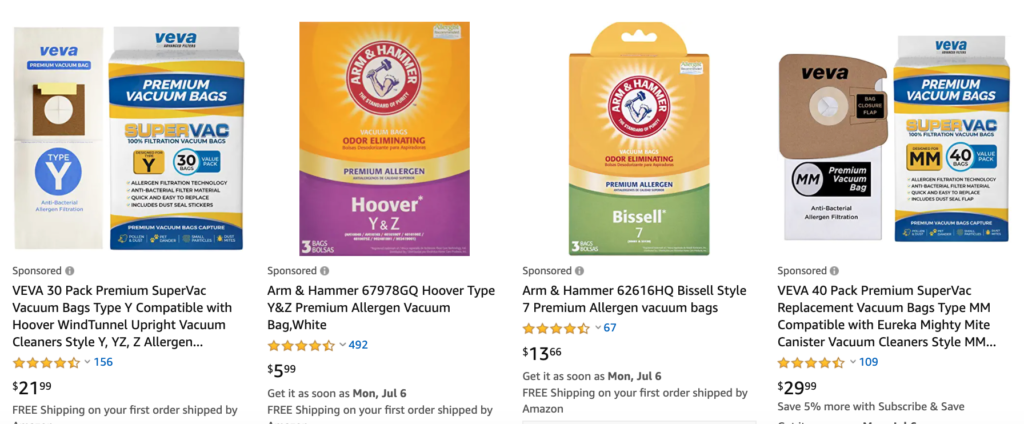Get into your manual car and press the start button. It will safely get you to your desired destination.
Best Amazon PPC Strategy & How to Properly Run Amazon Campaigns
If you are going to run Amazon sponsored products without any structure, then you are believing the above sentence to be true and, furthermore, believe that advertising on Amazon works as a car on autopilot – it will just get you to your destination without any effort. Obviously, both claims are false.
While this article’s intent is not designed to teach you how to operate your car, what we can help you with is how to effectively set up your PPC campaign. So, how to do Amazon PPC? What’s the best way to structure Amazon PPC campaigns?
Valid question. We get asked about this a lot and have created this user-friendly guide to help you set up yours.
→ Prefer to learn by watching a video? We’ve got you covered. Check out the replay of our webinar Amazon Campaign Best Practices for Evolving Product Lifecycles
Let’s delve into what it takes to properly implement Amazon PPC ad campaigns so that you can direct your advertising efforts where they need to go in order to achieve your business goals.
How to Optimize Amazon PPC campaigns?
Start with a basic Amazon campaign structure, and you can grow from there. It makes sense to begin with Sponsored Products campaigns. These are the best ways to get visibility on your products quickly. Later, once you’re more established on Amazon, you might move up the ad funnel to include Sponsored Brands or even DSP.
Sponsored Products are highly dependent on consumer search terms. If a consumer searches for “vacuum cleaner bags”, the ads will match with that search term to show the consumer your product as a result.

Amazon Sponsored Products ad campaigns need to be thoughtfully structured in order to ensure that you’re not spinning your wheels and wasting your advertising dollars bidding the wrong amount on the wrong terms for the wrong products.
Amazon PPC Campaign Structure. Understanding Product Grouping
Some sellers run catch-all campaigns, containing every product in their catalog, with the idea that these will catch any product they might be missing in other, more targeted, campaigns.
Let’s say you recently launched a new travel mug. And you want to create a single Amazon PPC campaign with this new product along with an older model you’re trying to liquidate. Here, the products are of differing quality, have differing margins, are at differing stages in their lifecycle, and have differing competition — it won’t make sense to have the same bidding strategy for both sets of products. Simply put, it’s difficult to allocate spend differently according to those divergent goals. In this case, incorrect PPC advertising campaign structure leads to overspending and missed opportunities. So, Amazon PPC optimization for these campaigns is virtually impossible.
Avoid this by purposefully grouping products together within ad groups and campaigns. Every campaign should have a distinct purpose. Exactly how you structure your Amazon PPC campaigns will depend on your catalog, goals, and preferences.
Whether you’re just getting started with Amazon PPC advertising and building your first campaigns, or you’re a seasoned seller and have been running campaigns that could benefit from restructuring, the first thing you’ll need to do is analyze your catalog. Consider product lines, margins, and product goals in order to determine the best ad structure.
Product Line
One way to group products is by product line or parent ASINs. This is the most concise and easy way to group products. Any child ASINs should be within the ad groups – either grouped together or individually for a more targeted approach.
Margins
You should also ensure that all the products in any given PPC ad campaign have similar margins. This will enable you to have granular control in setting your bids.
If you want to bid more aggressively on a product with a 40% margin as opposed to one with a 14% margin, you’ll be able to isolate them if you’ve structured your Amazon advertising campaigns according to margins. A good rule is to avoid grouping together products with more than a 10% difference in margins. Likely, if you’re grouping by parent ASIN, you’re already doing this.
Product Goals
Finally, when you’re grouping products in campaigns, it’s important to think about product goals. All the products within a PPC campaign should share a common goal. If you don’t group by goals, you’ll inevitably end up overbidding on some products and underbidding on others.
Your goals should reflect where a product is in its lifecycle as well as your long-term plans for your business. Your bidding strategy on a product you’re newly launching will be different than for a product in the profitability stage. If your PPC advertising is new or your product is new to Amazon, they’re unlikely to perform at their peak performance. Launching a product requires time to gather data about what keywords perform efficiently and what bidding strategy works best. It also takes time to build up reviews and rankings.
But that’s not yet everything about Amazon Ads campaign structure – on the contrary, we have merely started. Let’s move on to mirrored and audience-based options.
Choose a Mirrored or Audience-Based Amazon PPC Campaign Structure
Once you’ve analyzed your catalog and grouped products accordingly, you’ll need to decide what kind of PPC ad campaigns you’ll be running.
If you’re new to Amazon advertising, you’re likely still working to establish a brand presence, and your budget will be best spent identifying and building ranking on category-level terms. This is when we recommend following our basic PPC campaign structure best practices, also referred to as “mirrored campaign structure.”
If you have brand awareness on Amazon and often see searches involving your brand or competitors, you may want to utilize an audience-based Amazon campaign structure that builds complexity and control on top of a basic mirrored structure.
Mirrored Campaign Structure 2:1
A mirrored structure is a 2:1 structure of two campaigns for every product. You’ll be running PPC automatic and manual campaigns simultaneously for each ASIN that you’re advertising.
A mirrored Amazon campaign structure enables you to use the explore and exploit strategy to improve advertising efficiency. Use auto campaigns to explore search terms. Identify performing terms in your auto campaign and transfer them into the keywords in the corresponding manual campaign, where you can more closely control them.
Audience-Based Campaign Structure 4:1
If your brand is well established on Amazon, an audience-based structure may be more effective. It offers you a more microscopic control over how you allocate your ad spend and helps you better capture competitor market share.
In an audience-based campaign structure, you’ll still be running automatic and manual campaigns (sponsored products campaigns) simultaneously in order to harvest terms from the auto campaign and manage them in the manual campaign.
However, instead of having two campaigns for every one product, you’ll have several campaigns for every one product – typically a single automatic campaign and then three manual campaigns each designated for brand, competitor, and generic keywords. So, you’ll have a total of four campaigns for each product. This will enable you to utilize different bidding strategies for different keyword types.
Allocate A Sufficient PPC Campaign Budget for Best Results
It’s important to budget properly for each campaign that you have running so that you don’t run out during the day and miss out on opportunities for impressions and conversions at night.
If you’re consistently hitting your budget cap, consider whether you can allot more budget toward said campaigns or shift the budget from less important campaigns to make sure you’re sufficiently feeding campaigns that you are relying on.
Use Consistent Naming Conventions
It’s easiest to manage PPC ads if campaign names and ad groups reflect the product line, goal, and targeting type. You should be able to identify which SKUs are in each campaign and ad group just by the name. You can easily edit campaign names within Seller Central.
Example: “Vitamin C – Launch – Competitor – Manual.”
You’ll know exactly which products are in which campaigns and what those campaigns are intended to accomplish. You’ll be able to sort and filter campaigns to focus your attention on optimizing particular ones.
This is the kind of thing that might not feel important when you’re starting out and only have a couple of products with a handful of campaigns, but as your catalog grows, your business grows, and the strategies you test grow, you’ll be glad you consistently utilized a clear naming convention.
How to Optimize Amazon PPC Campaigns? It’s All About Rinse & Repeat
PPC is never static. You can’t expect to set it and forget it. This goes back to the car analogy at the beginning of the article. PPC won’t just drive itself. You’ll need to regularly assess your campaigns’ performance to make sure your campaigns are still working in conjunction with your goals. Adjust keywords and bids frequently in order to continually optimize your PPC campaigns.
As your campaigns mature, you’ll be able to refine them and move them toward greater profitability increasingly. You can’t expect it to happen overnight, and it won’t happen without care and effort.
As your catalog grows and changes, ensure that you continue to maintain a structure that groups together similar products that share similar goals. As the market changes and competition comes or goes from the marketplace, be sure you’re continuing to update your advertising strategy to meet the changing circumstances.
Amazon Campaign Structure. Key Takeaways
So, let’s return to the question we began with– how should you structure your PPC campaigns on Amazon? Here’s what we recommend:
- Don’t run catch-all campaigns
- Group products together by product line, margins, and goals
- Choose a mirrored or audience-based campaign structure
- Move high performing search terms from auto campaigns into manual campaigns
- Allocate sufficient budget
- Use consistent naming conventions
- Monitor and frequently adjust keywords and bids
Teikametrics Flywheel is designed to take the pain out of managing all of this. Use this proprietary software to build effective Amazon PPC campaigns structured by goals and margins, automate bidding throughout the day, and identify performing search terms to move them into manual campaigns as keywords. Start your Teikametrics Flywheel 30-day free trial or book your Flywheel demo today.
All these search results for the search term “vacuum cleaner bag” are labeled “Sponsored,” indicating that they’re Sponsored Products ads; image from Amazon.com





